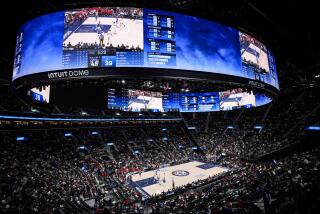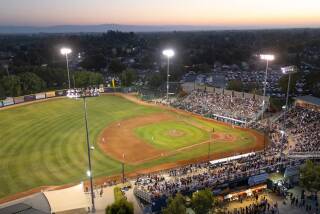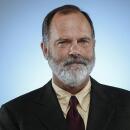Nearby Museums Fear Scope of Coliseum Plan
- Share via
Amid the high hopes and hoopla that surround Los Angeles’ bid for a new professional football team, a significant controversy is brewing over the harm that some observers believe the proposal’s success could inflict on three of the city’s most prized cultural institutions: the African American and Natural History museums and the hugely popular California Science Center.
Under a pitch made by New Coliseum Venture, the leading contender to bring football back to the Los Angeles Memorial Coliseum, that private group would have control of the stadium far beyond the professional football season. In fact, according to documents obtained by The Times, the group is asking to be allowed to host at least one professional football team, one or two college teams, a professional soccer team and 75 other events such as concerts and shows each year.
In addition, the group’s proposed operating agreement calls for it to have unlimited use of the Coliseum after 5 p.m.
Those numbers have stirred unease among some leaders of the three museums already located in Exposition Park. It’s one thing, they argue, to give up their parking and put up with huge crowds eight or 10 days a year, the number of home games in a professional football season. It’s entirely another matter to face that imposition on as many as 100 more days a year and on as many nights as the new tenants choose.
Although civic leaders are trying to avoid it, some observers fear an emotional clash of interests: Children and culture versus commerce and sports.
“There is something of a conflict between the sports, basketball and football and . . . what the museums would like, a more serene, life-of-the-mind atmosphere,” said Councilman Mark Ridley-Thomas, the leading force behind the effort to bring football to the Coliseum. “What everyone needs to remember is that neither of those polarities, if it’s fair to call them that, owns the park.”
In fact, the state of California owns it. But managing the park falls to a dizzying array of groups, which share some common interests but also occasionally find themselves at odds. The Science Center board oversees that facility and many of the park’s amenities. The Natural History Museum comes under the county. The California African American Museum belongs to the state. And the Coliseum itself is run by a special commission that includes state, county and city appointees.
Soccer Helped Put Coliseum in Black
Until recently, managing those facilities was something like looking after a ghost town. The museums were struggling, and the Coliseum was in the red, its professional football tenants long departed, one for Anaheim and then St. Louis, the other back to Oakland.
Today, however, the park suffers from the opposite problem: Soccer has helped put the Coliseum back in the black, renovations at the Science Center have made it a major attraction, and pro football wants back in.
As Ridley-Thomas is fond of saying, Exposition Park has become one of the most vibrant urban parks in America. It boasts cultural attractions, a community center and a swimming pool. Nestled in an area badly damaged by the 1992 riots, it nevertheless draws visitors from across Southern California.
The question no longer is how to get people to the park. It’s how to handle all of them.
The park’s renaissance owes much to the Science Center. In just over a year since it opened its doors, the center has become one of Los Angeles’ most popular destinations, especially for children. Museum officials say 2 million children visited the center in its first 12 months.
So popular is the museum, in fact, that many observers believe it has helped turn the National Football League’s head about Exposition Park, persuading skeptical owners that the same area that saw two teams come and go finally is ready to help a pro franchise succeed.
“Were it not for the Science Center, the NFL would not even be interested in the park,” said Ezekiel Patten, a Science Center trustee who also serves as president of the African American Museum.
That interest is welcome, Patten added. But he and others worry about how to balance the needs of football and museums in a way that enriches Exposition Park for all its users.
The problem, as it is so often in Los Angeles, is parking. Football supporters need every space they can get their hands on, while the museums need what they have to keep the crowds coming.
In fact, the NFL has complained to local organizers that, even if every space in Exposition Park is used on football days, there still are not enough slots to satisfy the league.
League officials want the groups vying to own the next football team to come up with a plan for parking 27,000 cars at Exposition Park. The plan created by developer Ed Roski identifies 12,000 spaces and relies on the University of Southern California to supply 10,000 more on game days.
NFL Seeks 27,000 Parking Spaces
Privately, local observers believe the NFL’s demand for 27,000 spaces is unworkable. For one thing, it would require the developers to commission a new environmental impact report, which would slow down considerably the process of winning approval for whatever plan emerges. That alone might be enough to derail the idea, since the NFL has said it wants to make a final decision by September.
Even if that hurdle could be overcome, there is the problem of who would pay for new parking. City government is loath to pump in public money in order to sweeten the football deal, but it is possible there would be greater support for publicly financed parking--either by acquiring nearby land or building a parking structure--if it were pitched as spaces for museums rather than billionaire football owners.
As that scenario suggests, the same parking shortage that has attracted the NFL’s concern underscores the tension between the museums and the football effort.
Imagine a Sunday afternoon in October. Where would parents with children park their cars to visit a museum if Exposition Park were overflowing with football fans?
Although the answer is that without more parking spaces, there simply is nowhere for those families to go, the museums already had reconciled themselves to that. It did not appear to be a bad trade-off, because it meant fewer than a dozen slow days in return for thousands of people enjoying the park.
But when the other attractions start piling up, so do the days.
How about the Saturday afternoons when USC is playing? And what about the 16 home game days that a professional soccer team would play? Or on the days of a big concert or motocross races or car shows or tractor pulls?
“Everybody I know wants something to work out there,” said Bank of America executive Tom Decker, a member of the state board that oversees Exposition Park and a trustee of the Science Center. “But it has to work for everybody, especially the people who are already there.”
Money Is Real Underlying Issue
Although parking presents the flash point for the debate, the real underlying issue, of course, is money. Roski and his partners, principally billionaire financial services entrepreneur Eli Broad, are proposing to build a new stadium inside the peristyle of the Coliseum. Most experts predict that stadium will end up costing at least $300 million.
To pay off the stadium--not to mention the $600 million or so that a football team is expected to cost--will test the depths of the deepest pockets. One way for the owners to maximize their profit is to pack as many events as possible into the stadium. But the more they pack in, the more pressure they put on the museums.
“Roski is a businessman,” said Patten. “He has to get a return on his investment.”
There’s no disputing that, and many of the museum officials and supporters stress that they have no quarrel with Roski or Broad. In fact, Broad is considered a welcome presence by many of the museum officials, in part because he has served on museum boards and is considered more passionate about cultural affairs than football.
But Broad will not be there forever, and the New Venture group is seeking a 55-year lease. Even the most ardent supporters of the football effort agree that the museums have a right to look out for themselves in the face of such a major change.
“It’s a legitimate concern,” county Supervisor Zev Yaroslavsky, a member of the Coliseum Commission, said of the museums’ fears that football could affect their operations. “We can’t ignore their interests or concerns. We need their help, and we have to work through these issues.”
Big Crowds Help Other Facilities
At the same time, there are potential benefits to the museums. More traffic in and out of Exposition Park means more people may become aware of the facilities. That may help boost attendance on days when there are no games.
In addition, Ridley-Thomas has suggested that creative thinking could allow all parties to capitalize on the crowds. Imagine, he proposes, if the museums could develop child-care programs that would allow youngsters to visit the museums while their parents attended a football game. Or special packages that would encourage families to arrive early on a game day, visit a museum and then go on to the gridiron.
“The order of the day,” he said, “is to creatively and productively coexist.”
Jamesina E. Henderson, executive director of the African American Museum, agrees.
“I believe that culture and commerce are the cornerstones of community,” she said. “Without question, there will be challenges. But I think this could be a delightful opportunity.”
Patten says he too has high hopes. He said it is up to the Coliseum Commission to make sure that the New Venture group is held to a reasonable number of events at the Coliseum, and he added that it will then be up to the museums to make the solution work for them.
With thousands of people regularly descending on the park to take in everything from a concert to a tractor pull, there should be opportunities, he said.
Does that mean Patten imagines a bunch of tractor-pull fans swinging by the African American Museum or the Science Center for a few hours of culture after a long day of horsepower?
‘I’M AN OPTIMIST,” HE SAID, LAUGHING. “IT COULD HAPPEN
More to Read
The biggest entertainment stories
Get our big stories about Hollywood, film, television, music, arts, culture and more right in your inbox as soon as they publish.
You may occasionally receive promotional content from the Los Angeles Times.











